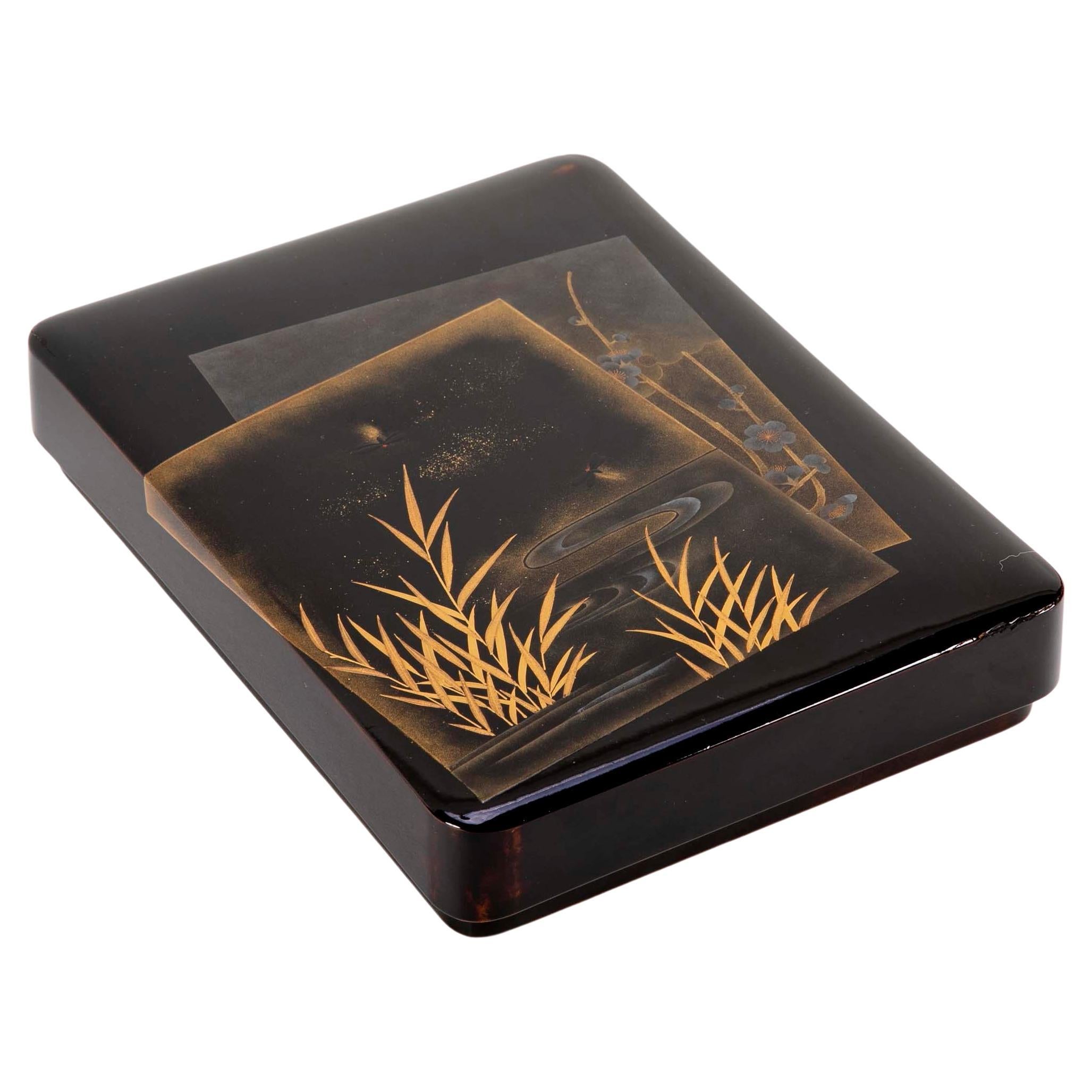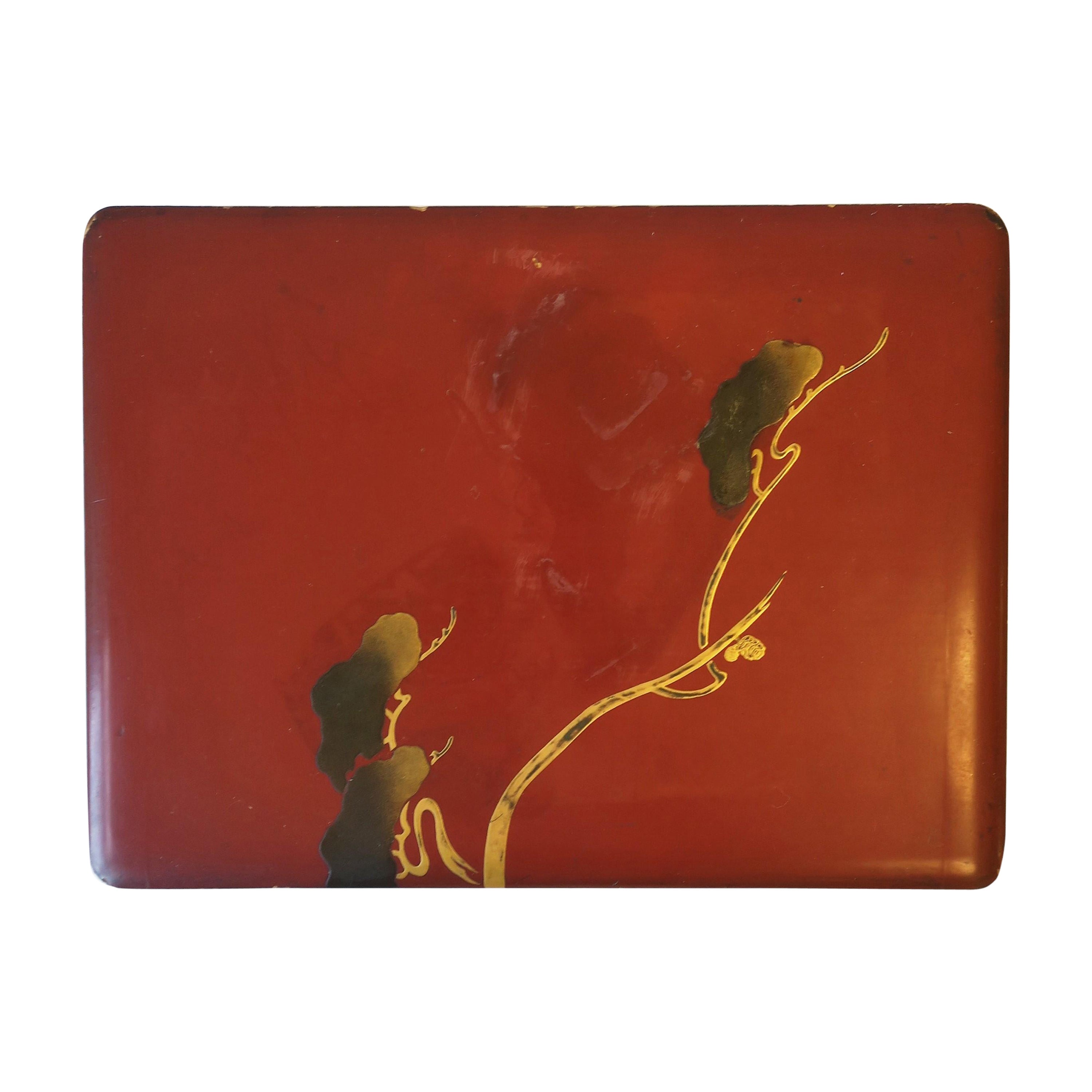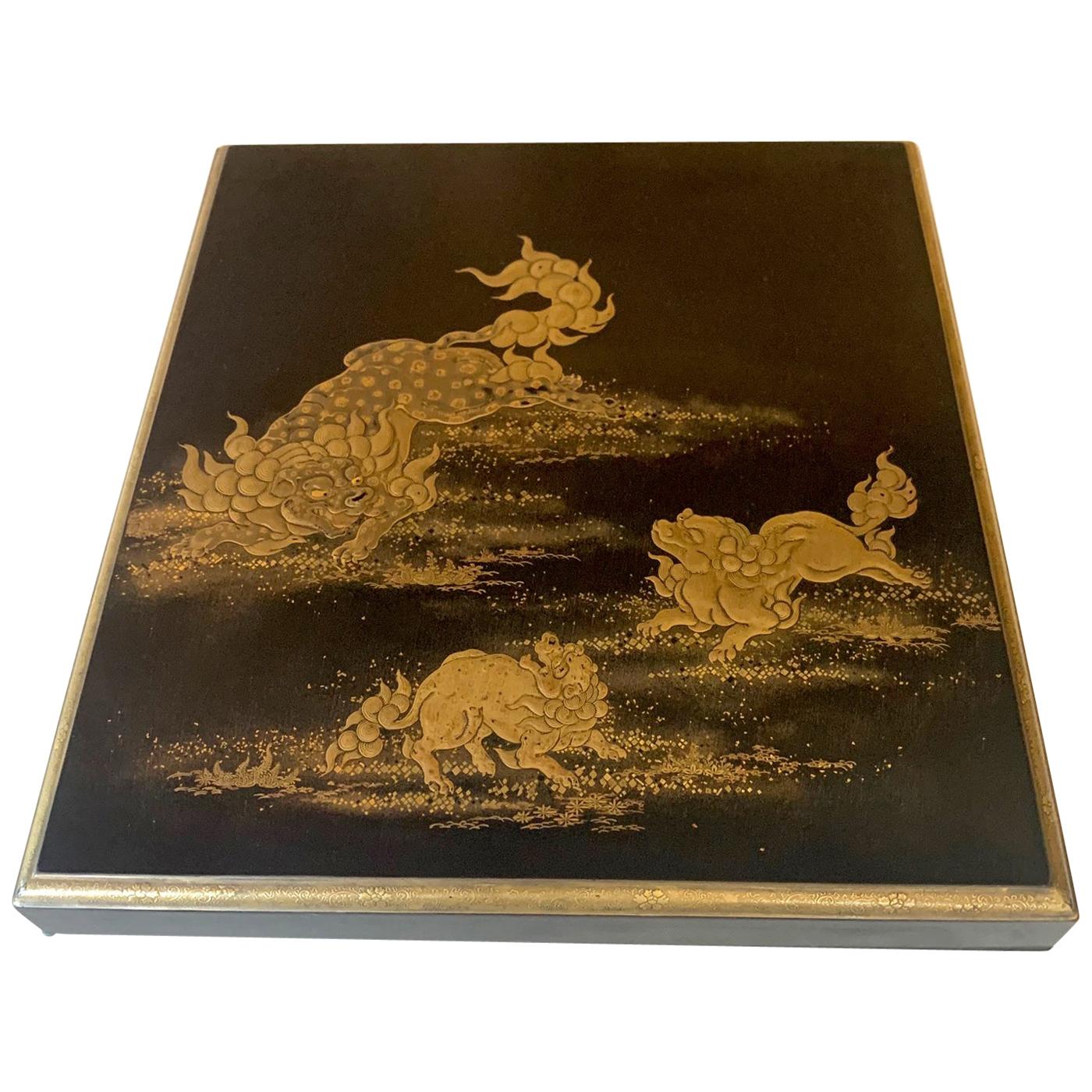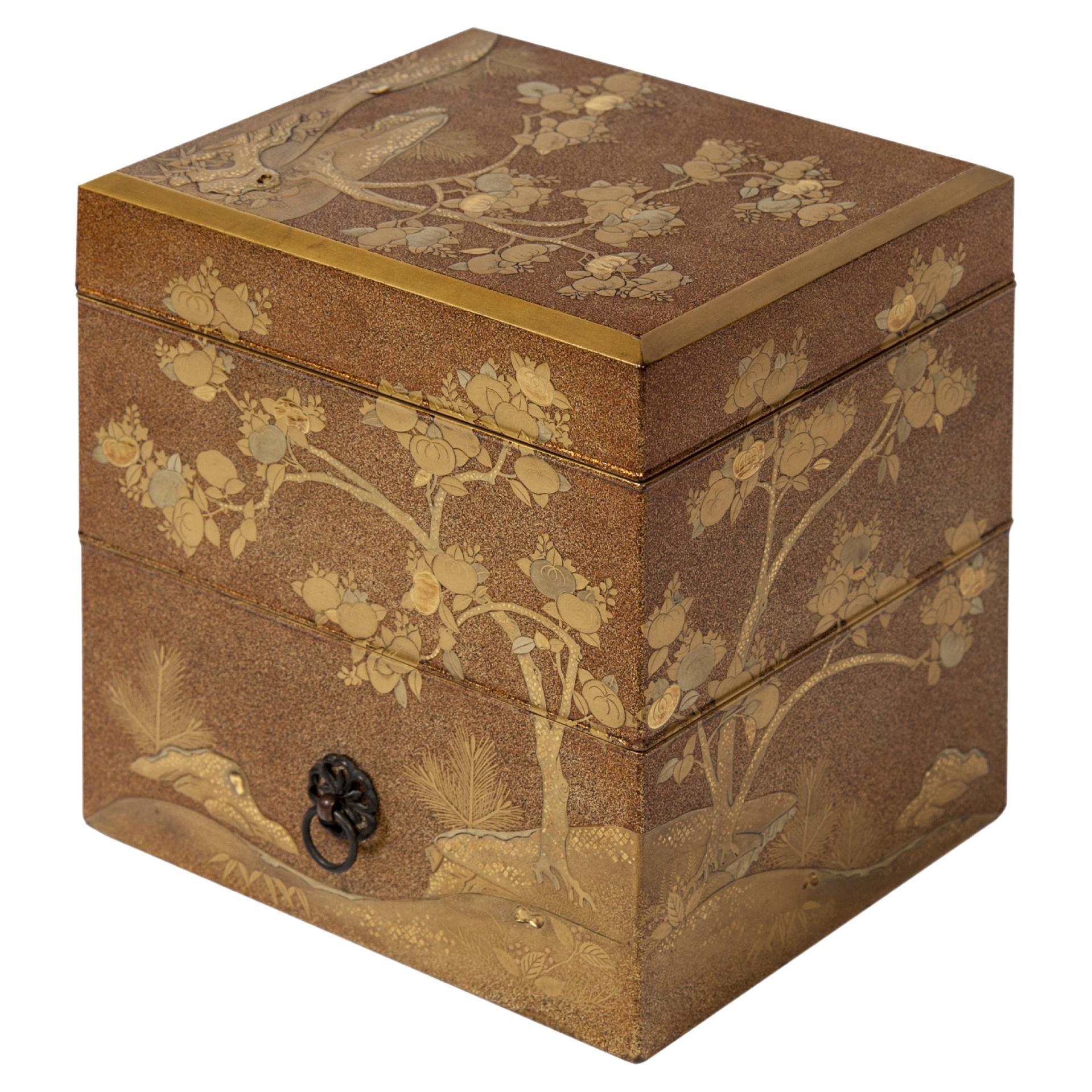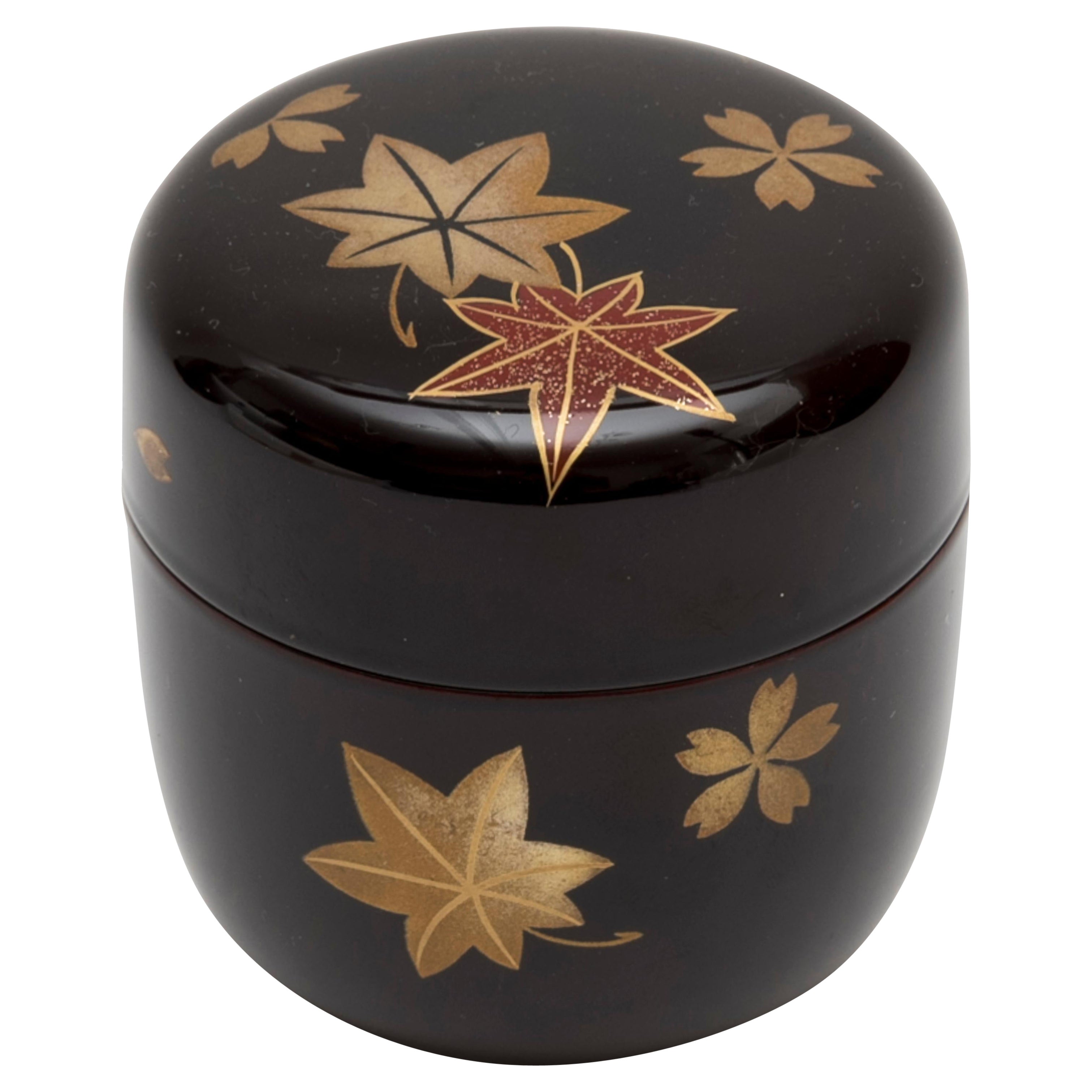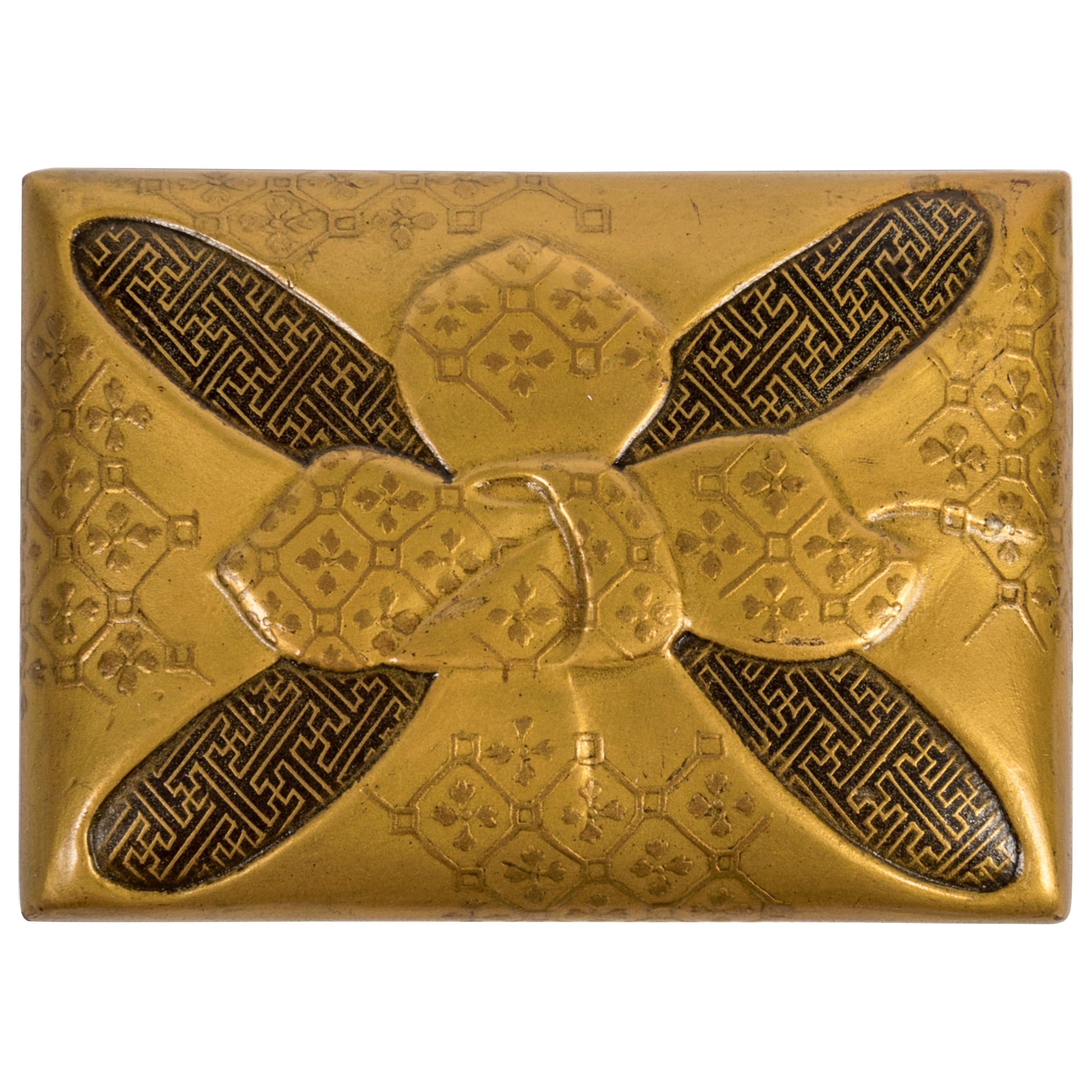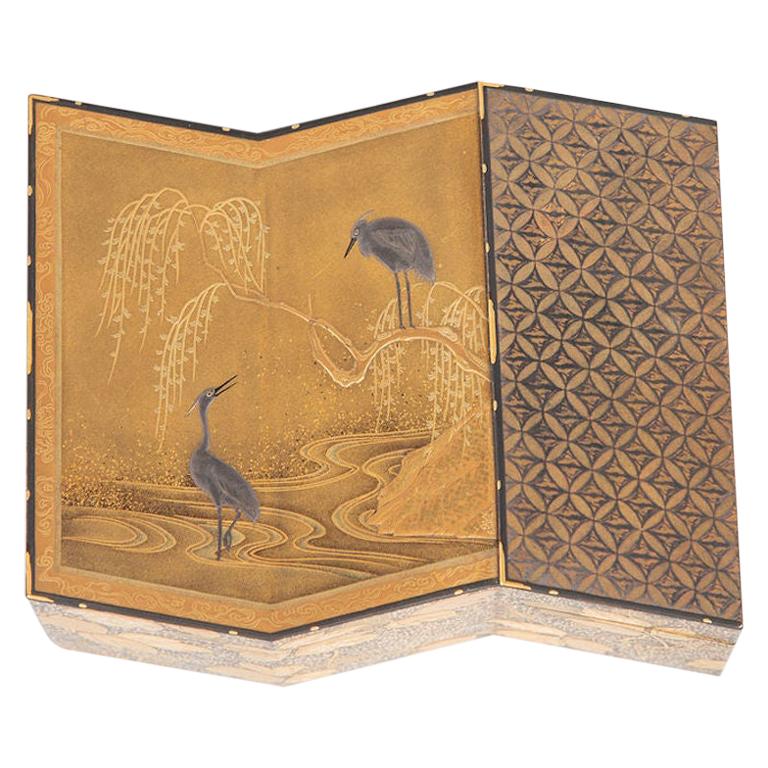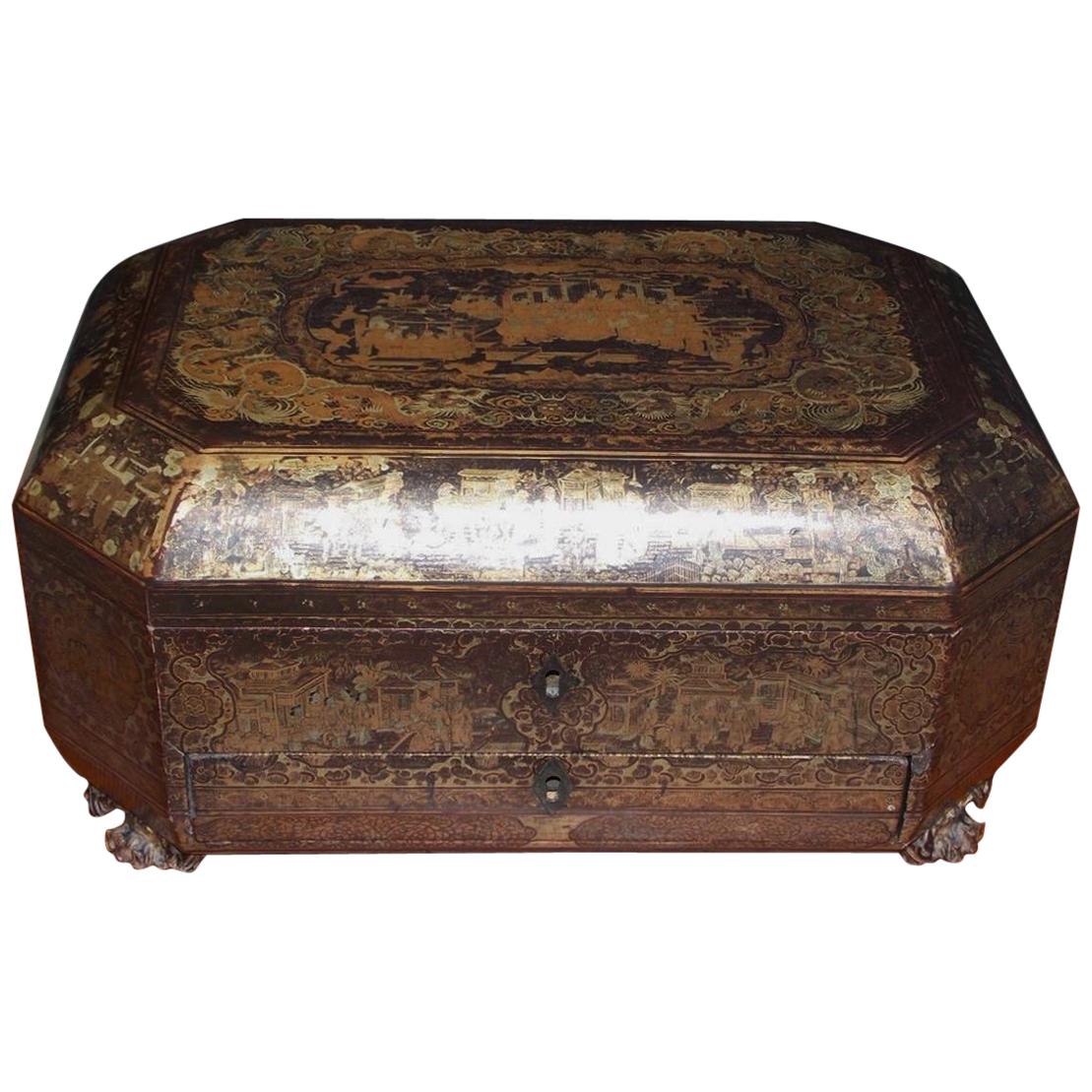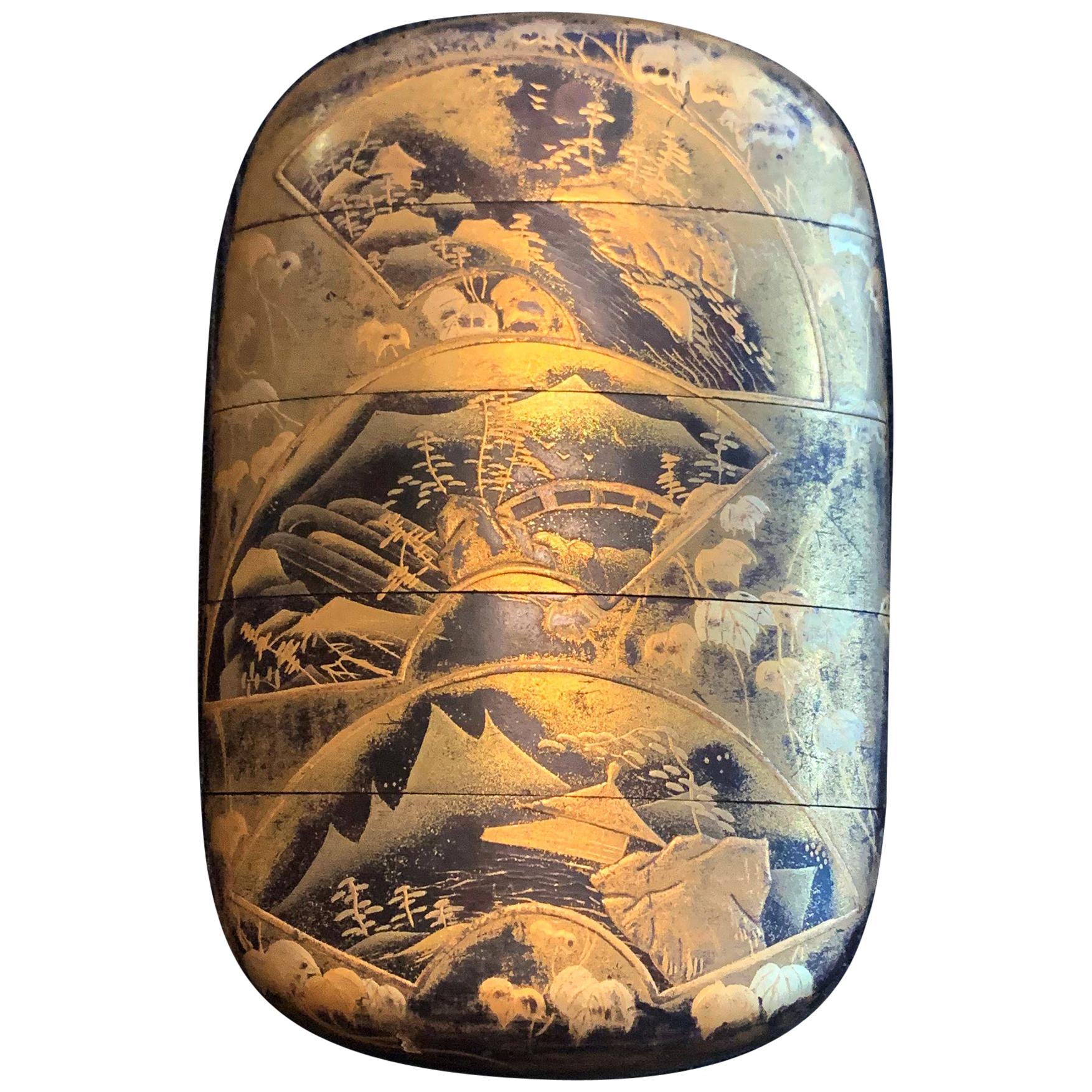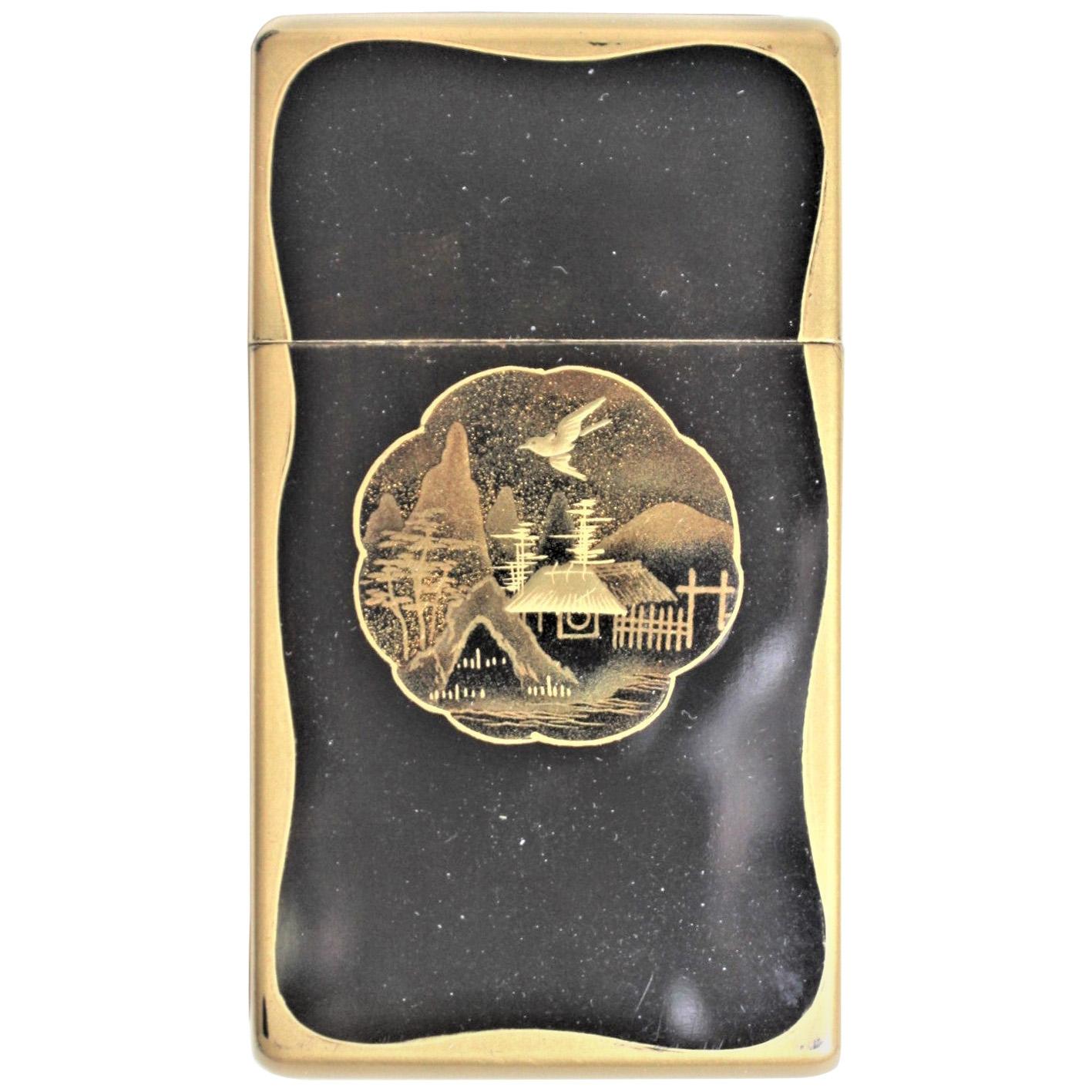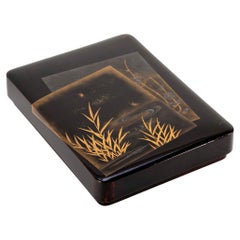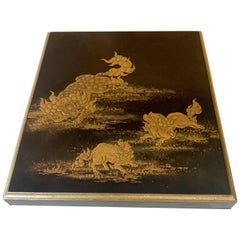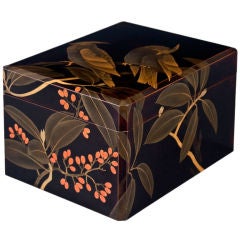
A Fine Japanese Black and Gilt Lacquer Box
View Similar Items
1 of 5
A Fine Japanese Black and Gilt Lacquer Box
About the Item
This piece @ H.M. Luther Antiques
Greenwich Village
61 East 11th Street
New York, NY 10003
- Dimensions:Height: 6.5 in (16.51 cm)Width: 8.5 in (21.59 cm)Depth: 10.175 in (25.85 cm)
- Place of Origin:
- Date of Manufacture:Meiji Period, Circa 1900
- Condition:Excellent Condition.
- Seller Location:New York, NY
- Reference Number:Seller: 88661stDibs: U1110268556327
You May Also LikeView All
- Black and Gold Lacquer Japanese Suzuribako BoxLocated in Stamford, CT19th century Japanese black and gold lacquer Suzuribako box with firefly and plum blossom design.Category
Antique Late 19th Century Japanese Decorative Boxes
MaterialsLacquer
- Japanese Lacquer BoxLocated in New York, NYA Japanese red burgundy, gold and black lacquer box with round corners and silk cloth interior lining, circa early-20th century, 1920s, Japan. Box was desi...Category
Early 20th Century Japanese Decorative Boxes
MaterialsWood, Silk
$900 Sale Price28% Off - Japanese Lacquer Box with Fine Maki-e Decoration Meiji PeriodLocated in Atlanta, GAA lacquered wood box with lid from Japan circa 19th century Meiji Period. The finely decorated box was used to store paper slips and small documents on the desk. It is overall finished with black lacquer (kuro) with sparse Mura-Nashiji effect outside and on the top surface of the lid, there are three Komainu, (sometimes known as Shishi or Japanese lions) frolicking and forming a circle in lively motion. Komainu are auspicious animals in Japanese cultures in both Shinto and Buddhism tradition. Originally from China, these animals symbolizes guardians to ward off evil spirits. Hiramaki-e was used in combination with carving and combing to render the lions with various surface textures. A gilt border with an slight angle was given to the lid and even the thin band is decorated with miniature floral scrolls. The interior of the box was finished in a dense nashiji. Underneath the lid, a cluster of peonies open lavishly by two gentle mounts. Takamaki-e (high relief) in both gold and silver were...Category
Antique Late 19th Century Japanese Japonisme Lacquer
MaterialsWood, Lacquer
- Japanese Gilt Black Lacquer Tea Chest, c. 1850Located in Chicago, ILWith intricate construction and exquisite decoration, this fine tabletop tea chest is a true masterpiece of Japanese cabinetry and lacquerware. Decorated in ...Category
Antique Mid-19th Century Chinese Meiji Lacquer
MaterialsWood
- Japanese Lacquered Tebako 'Box'Located in PARIS, FRTebako box with three compartments in golden and nashi-ji lacquer, decorated with golden, red, and kirigane lacquer, golden persimmon tree leaves, among rocks. The compartments are of increasing size from the top. The decoration is in continuity. Persimmon has been cultivated in southern China for more than 2500 years and is believed to have been introduced to Japan in the 8th century. The veneer is a tree with very hard wood, similar to ebony. According to a legend, one specimen survived the atomic bombing of Nagasaki on August 9, 1945, close to the epicenter. It is therefore in Japan a symbol of strength and longevity. It is also the national fruit of the country. It is eaten as a traditional dish during New Year's Day celebrations. Tebako literally means "portable box...Category
Antique 1860s Japanese Lacquer
MaterialsLacquer
- Japanese Lacquered Natsume 'Tea Box'Located in PARIS, FRNatsume in dark red lacquer, decorated with autumn leaves and cherry blossoms in hiramaki-e and nashiji. Interior in black lacquer. Maple leaves (Momiji) are celebrated in literatur...Category
Mid-20th Century Japanese Lacquer
MaterialsLacquer
Recently Viewed
View AllMore Ways To Browse
Antique Chinese Mop
Stacking Lunch Box
Suzuki Kiitsu
Japanese Eggshell Lacquer
Temple Ranma Panel
Hasami Bako
Black Japanese Tray
Japanese Copper Trays
Japanese Silver Hawk
Namban Lacquer
Japanese Inlaid Plaque
Japanese Red Lacquered
Cinnabar Furniture
Mother Of Pearl Inlay Lacquer
Japanese Lacquer Comb
Japanese Lacquer Coffer
Kimono Tray
Antique Japanese Tobacco Pouch
